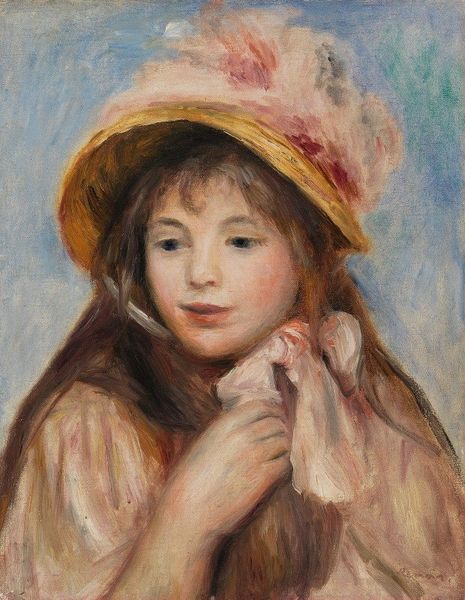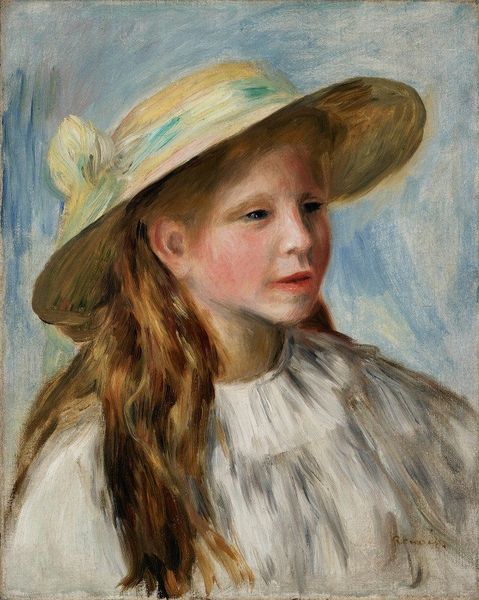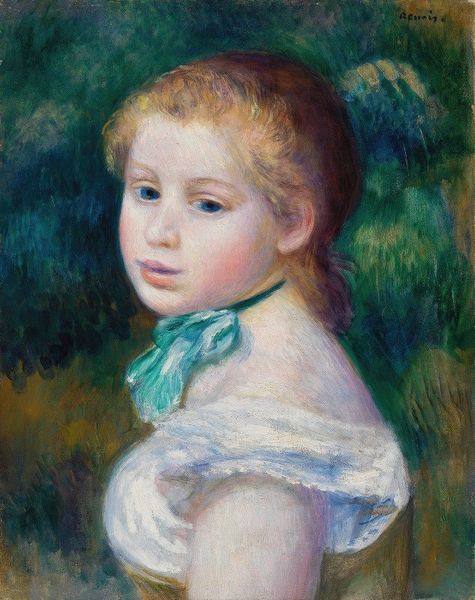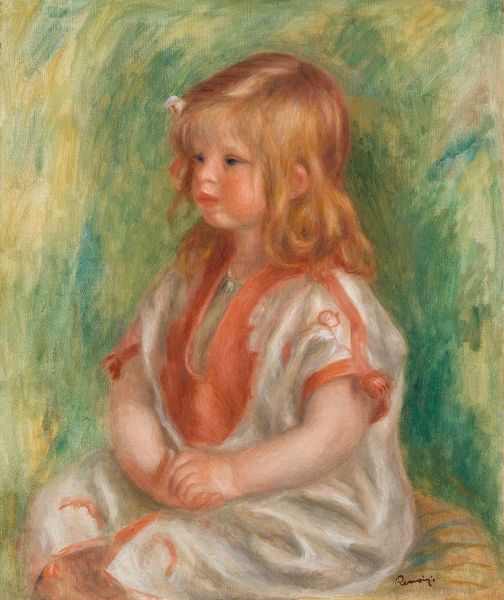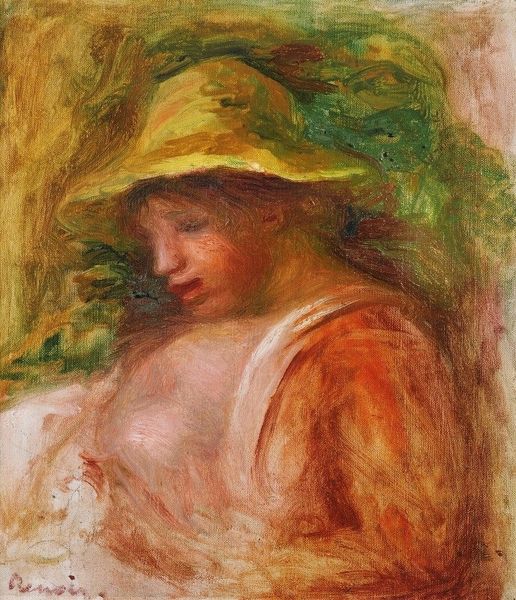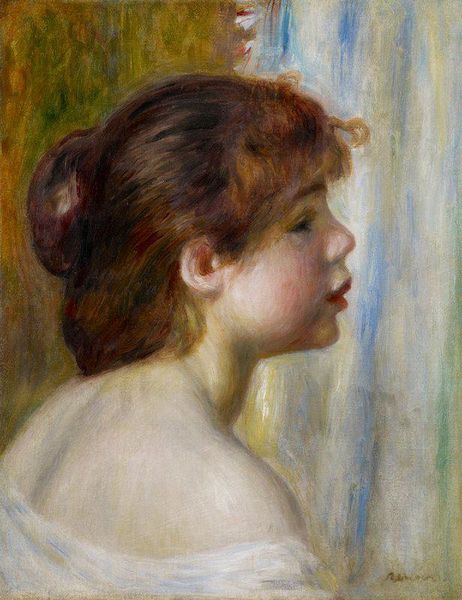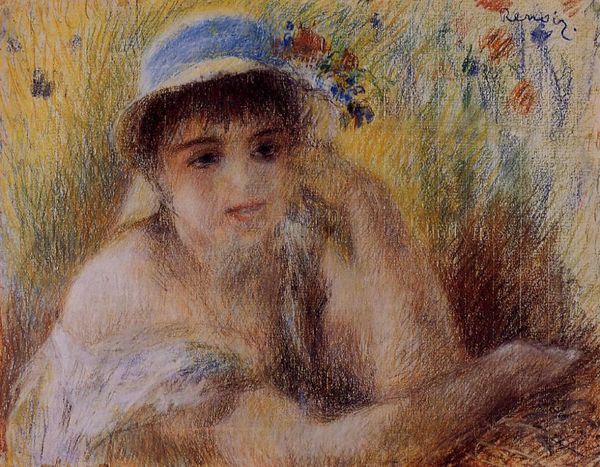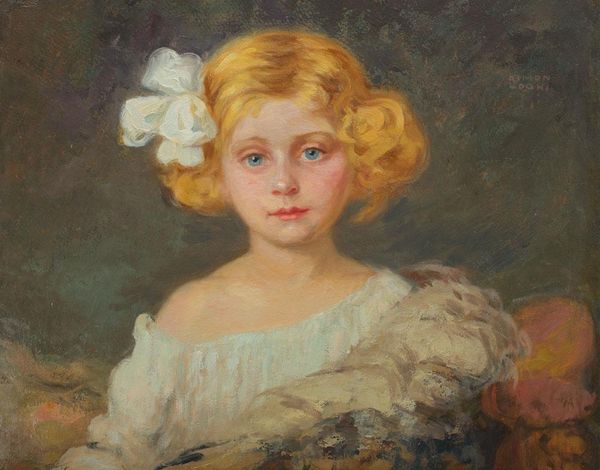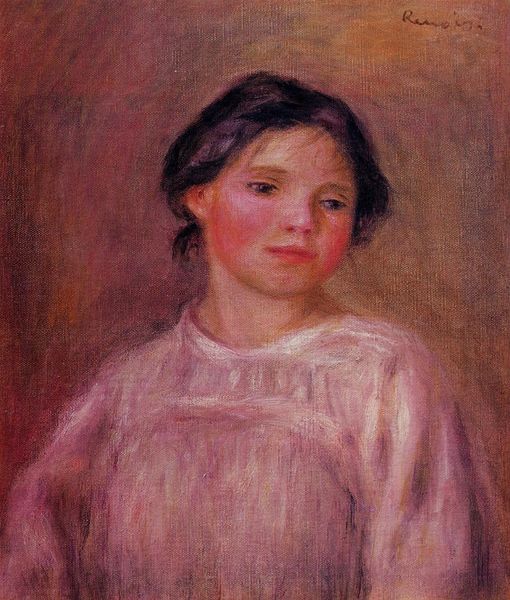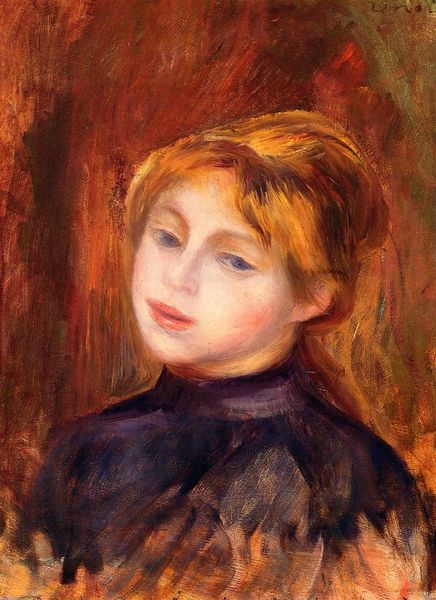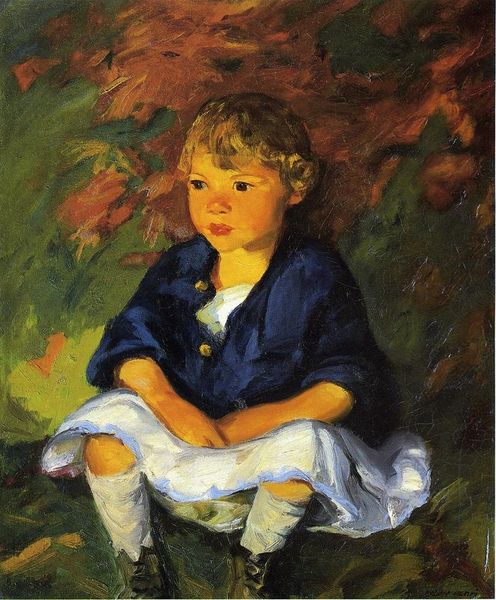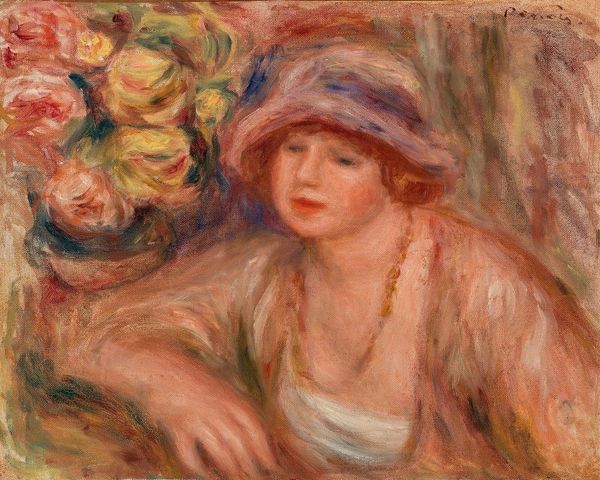
Copyright: Public Domain: Artvee
Editor: We're looking at Renoir's "Girl on a Balcony, Cagnes," created around 1911 with oil paint. It's luminous, bathed in a hazy light. I’m curious about the impasto, how thick the paint is applied, and what effect that has. What are your thoughts? Curator: The texture is key. Look at how Renoir manipulates the oil paint itself. It’s not just representational; it’s a physical record of his labor, his engagement with the materials. We can see a clear emphasis on the materiality of art production here, moving away from simply depicting reality. How do you think this affects the accessibility and perceived value of art? Editor: So, you’re saying that it’s not only *what* he paints but *how* he paints it that gives it value? It does feel very different than, say, a photograph attempting to capture the same scene. The physical presence is undeniable. Curator: Precisely. Think about the labor involved, the time invested. Renoir is literally building the image. Also, consider the provenance of the pigments – their origins, the socio-economic factors of their production and distribution at the turn of the century. These contribute to the overall meaning. What do you think this specific landscape communicates with its visual impression of the labor process? Editor: That's a lot to think about! It’s easy to just see the pretty picture, but digging into the materials and process gives it so much more depth and context. Curator: Exactly! We must consider that materials carry their own histories and cultural weight. Exploring the artist’s production is invaluable. Editor: I’ll definitely look at Impressionist paintings differently from now on.
Comments
No comments
Be the first to comment and join the conversation on the ultimate creative platform.
